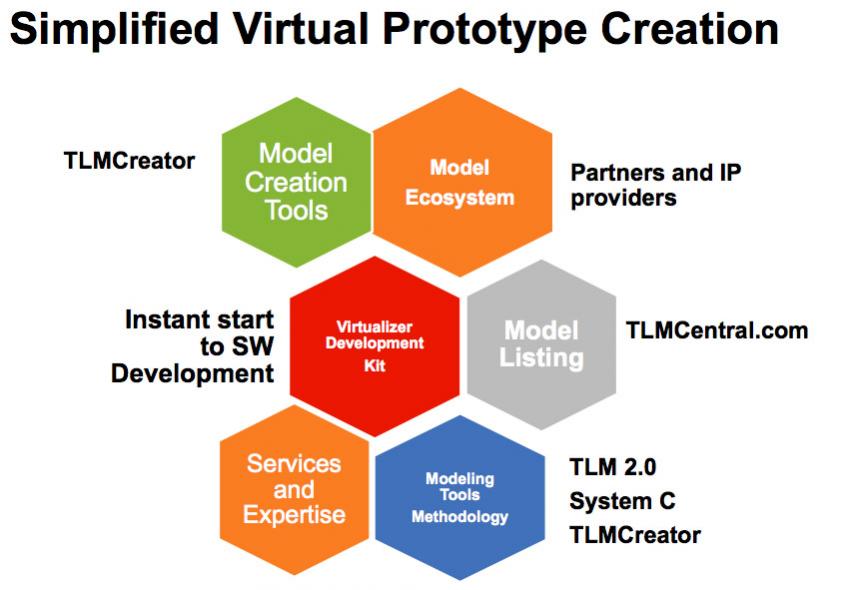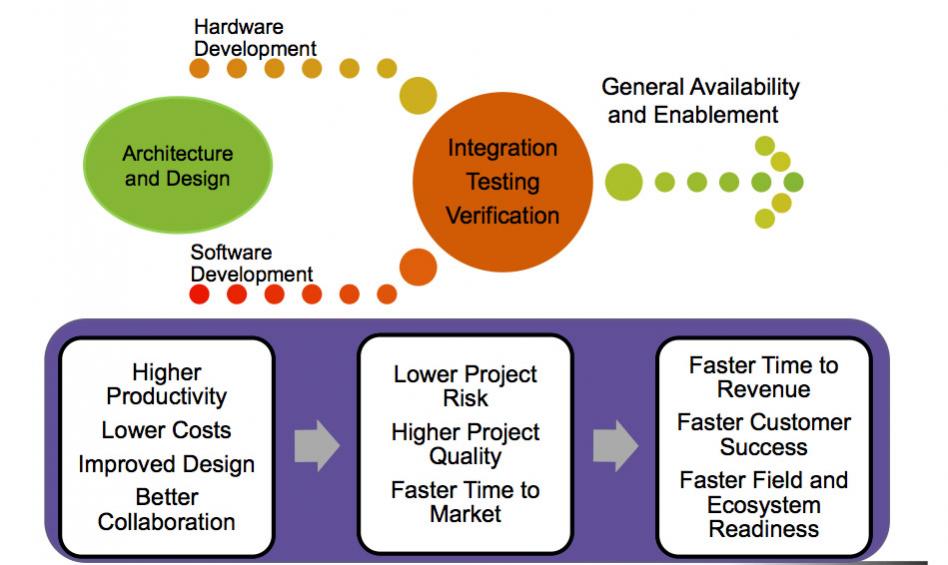Altera have been making use of Synopsys’s virtual platform technology to accelerate the time to volume by letting software development proceed in parallel with semiconductor development so that the software development does not need to wait until availability of hardware.
In the past, creating the virtual platform has been comparatively time-consuming, but the entire ecosystem of partners providing models, TLMcentral, DesignWare cores and peripherals has come together so that creating the virtual prototype is no longer hard. Plus, stealing some of the fast iteration approach from agile software development means that people realize that the entire prototype does not need to exist before it can be used. The software and platform can be co-developed incrementally.
 The software development environment does not need to be changed at all, the same tools can be used for the virtual prototype as for the actual silicon. Furthermore, whereas actual hardware is really tough for debugging when you get down to the signal level, a virtual prototype is simple. There is complete observability and no need for oscilloscopes and logic state analyzers to pick up the signals of interest when they are even available.
The software development environment does not need to be changed at all, the same tools can be used for the virtual prototype as for the actual silicon. Furthermore, whereas actual hardware is really tough for debugging when you get down to the signal level, a virtual prototype is simple. There is complete observability and no need for oscilloscopes and logic state analyzers to pick up the signals of interest when they are even available.
So what did Altera actually do? They used Synopsys’ Virtual Prototyping Solution to create a virtual target of their new Cyclone® V and Arria® V SoC FPGA devices. The Altera® SoC FPGA Virtual Target is a fast functional simulation of a dual-core ARM® CortexTM-A9 MPCoreTM embedded processor development system. This complete prototyping tool, which models a real development board, runs on a PC and enables customers to boot the Linux operating system out of the box. Designed to be binary- and register-compatible with the real hardware that it simulates, the Virtual Target enables the development of device-specific, production software that can run unmodified on real hardware.
The result of this, the big advantages that have always been there coupled with the lower barriers to use, mean that broad market adoption really (finally!) seems to be starting. For a company like Altera that doesn’t ship its own systems, there are two big advantages, one direct and one indirect.

The indirect advantage is the Altera’s customers and OEMs can accelerate their own software development and thus bring their systems to market sooner and with higher quality. Application software development can’t start until the operating system is at least partially running, which can’t start until there is some substrate (virtual or silicon) on which to run and test it. Virtual prototypes pull in the start and thus the finish of software development.

The direct advantage is that by accelerating the software development of their OEMs, they accelerate the time when they can ship in volume, which only happens when the customers’ software development is ready for market. In turn that means that there is less of a delay from, for example, introducing a new product or a new process node, to when Altera starts to get a real return on the investment.
The Altera/Synopsys success story is here. The Altera Q&A is here.
Share this post via:







Comments
There are no comments yet.
You must register or log in to view/post comments.